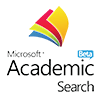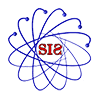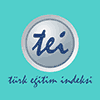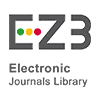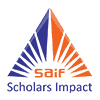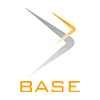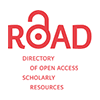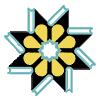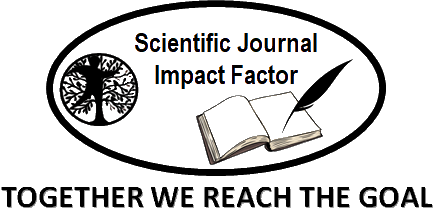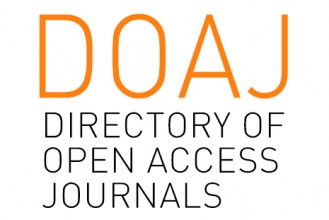Digital Literacy and Cultural Expression: How TikTok Reimagines Traditional Dance
Abstract
This study explores how traditional dance is reimagined and performed within the digital ecosystem of TikTok, focusing on the experiences of dance instructors at Yayasan Ayodya Pala, a cultural institution in Indonesia. Using a qualitative case study approach and guided by the Social Construction of Reality, the Culture of Connectivity, and Crystallization, the research investigates how cultural meanings are constructed, negotiated, and circulated in algorithmic environments. Data were collected through in-depth interviews with three instructors from different generations, revealing how they integrate digital literacy into pedagogical practices and cultural preservation efforts. The findings show that TikTok functions not only as a promotional and educational medium but also as a platform for cultural negotiation—where instructors balance tradition with digital aesthetics to reach broader, younger audiences. This study highlights the role of digital literacy as a form of cultural competence, positioning dance instructors as cultural mediators who adapt sacred and artistic expressions into participatory digital formats. In doing so, the research contributes to our understanding of how traditional arts evolve in response to platform-driven dynamics and youth engagement in the digital age.
Keywords
Full Text:
PDFReferences
Ambarwati, Dinda Dewi, Usrek Tani Utina, Jurusan Pendidikan, Seni Drama, Fakultas Bahasa, and Negeri Semarang. 2022. “JURNAL SENI TARI Pengaruh Dance Challenge Pada Media Sosial TikTok Terhadap Minat Menari Remaja Kabupaten Blora Di Era Pandemi Covid-19.” (11):22–35.
Anne Kaun. 2014. “A Review of Jose van Dijck: Culture of Connectivity: A Critical History of Social Media.” MedieKultur 56:195–97. doi: 10.7146/mediekultur.v30i56.16314.
Bejakovi, Predrag. 2020. “The Importance of Digital Literacy on the Labour Market.” 42(4):921–32. doi: 10.1108/ER-07-2019-0274.
Clarke, Victoria, and Virginia Braun. 2012. “Thematic Coding and Analysis.” The SAGE Encyclopedia of Qualitative Research Methods. doi: 10.4135/9781412963909.n451.
Daychak, Ashley. 2023. “The Pros and Cons of Social Media for Dancers.” Performing Dance Arts. Retrieved February 18, 2025 (https://www.performingdancearts.ca/tips-young-young-dancers-overcome-challenges/).
Erstad, Ola. 2010. “Educating the Digital Generation.” Nordic Journal of Digital Literacy 5(1):56–71. doi: 10.18261/issn1891-943x-2010-01-05.
Griffith, Frances J., Catherine H. Stein, James E. Hoag, and Kayla N. Gay. 2021. “#MentalHealthArt: How Instagram Artists Promote Mental Health Awareness Online.” Public Health 194:67–74. doi: 10.1016/J.PUHE.2021.02.006.
Puji, Santoso. 2016. “Konstruksi Sosial Media Massa Puji Santoso Dosen Komunikasi Fakultas Ilmu Sosial Dan Ilmu Politik Universitas Muhammadiyah Sumatera Utara.” Al-Balagh 1(1):34.
Reddy, Pritika, Kaylash Chaudhary, and Shamina Hussein. 2023. “A Digital Literacy Model to Narrow the Digital Literacy Skills Gap.” Heliyon 9(4).
Sabili, Muhammad Raihan, Balqis Putri Hidayatullah, Desi Indrawati, and Nana Sofiani. 2023. “The Effectiveness of Digital Platform in Preserving Traditional Dances of Indonesia : Implementation of Design Thinking Process in TARI ( Traditional Art of Indonesia ).” 01098.
statista. 2025. “Countries with the Largest TikTok Audience as of February 2025 (in Millions).” Retrieved (https://www.statista.com/statistics/1299807/number-of-monthly-unique-tiktok-users/).
Wohn, Donghee Yvette, and Brian J. Bowe. 2016. “Crystallization : How Social Media Facilitates Social Construction of Reality.” CSCW 2014 (April). doi: 10.1145/2556420.2556509.
Yin, Robert K. 2018. Case Study Research and Applications Design and Methods. 6th Editio. SAGE Publications, Inc.
DOI: http://dx.doi.org/10.18415/ijmmu.v12i11.7138
Refbacks
- There are currently no refbacks.
Copyright (c) 2025 International Journal of Multicultural and Multireligious Understanding

This work is licensed under a Creative Commons Attribution-NonCommercial-NoDerivatives 4.0 International License.
https://ijmmu.com
editor@ijmmu.com
facebook.com/ijmmu
Copyright © 2014-2018 IJMMU. All rights reserved.









